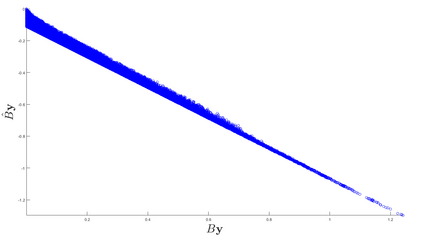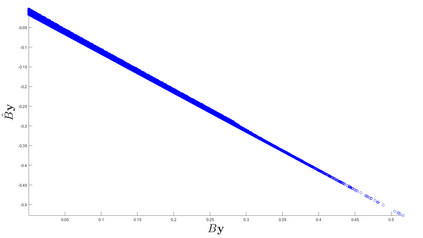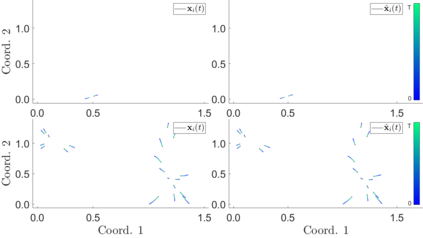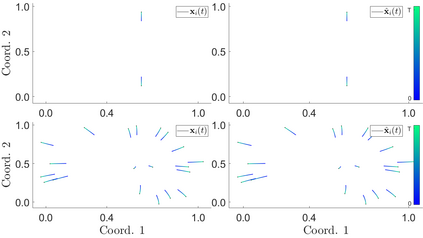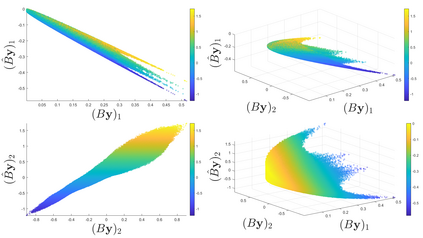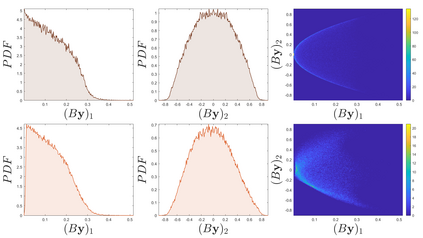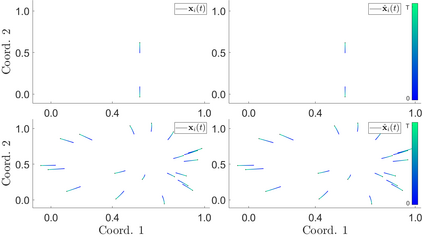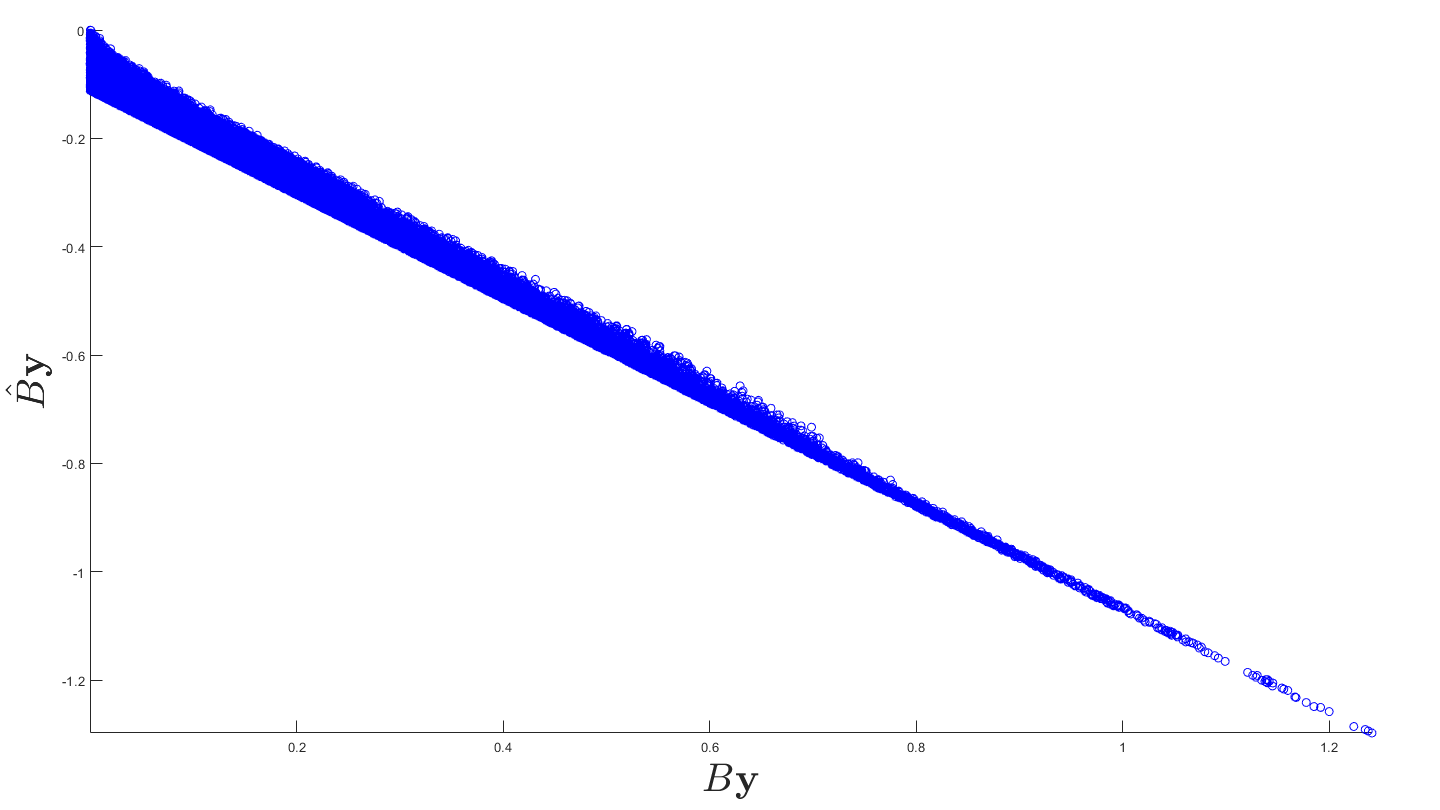Dynamical systems across many disciplines are modeled as interacting particles or agents, with interaction rules that depend on a very small number of variables (e.g. pairwise distances, pairwise differences of phases, etc...), functions of the state of pairs of agents. Yet, these interaction rules can generate self-organized dynamics, with complex emergent behaviors (clustering, flocking, swarming, etc.). We propose a learning technique that, given observations of states and velocities along trajectories of the agents, yields both the variables upon which the interaction kernel depends and the interaction kernel itself, in a nonparametric fashion. This yields an effective dimension reduction which avoids the curse of dimensionality from the high-dimensional observation data (states and velocities of all the agents). We demonstrate the learning capability of our method to a variety of first-order interacting systems.
翻译:许多学科的动态系统都以互动粒子或物剂为模型,互动规则取决于极少数变量(如对相距离、对相不同阶段等),即物剂状态的功能。然而,这些互动规则可以产生自我组织的动态,同时产生复杂的突发行为(集群、群集、升温等)。我们建议一种学习技术,根据对物剂轨道上的状态和速度的观察,产生互动内核所依赖的变量,以及互动内核本身,以非对称的方式。这产生了有效的维度减少,避免了高维观测数据(所有物剂的状态和速度)对维度的诅咒。我们展示了我们方法的学习能力,以各种先行互动系统为基础。

